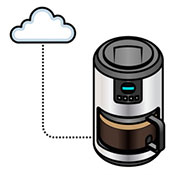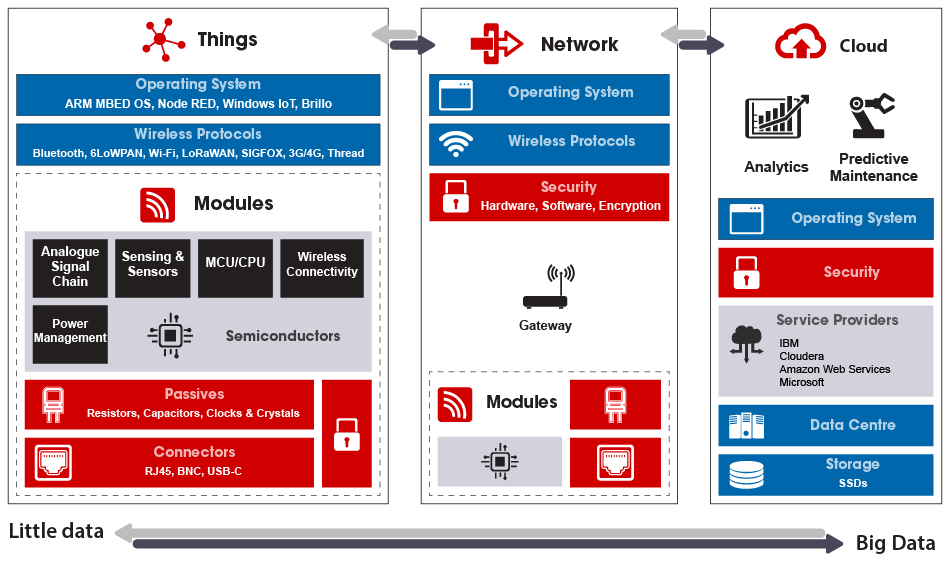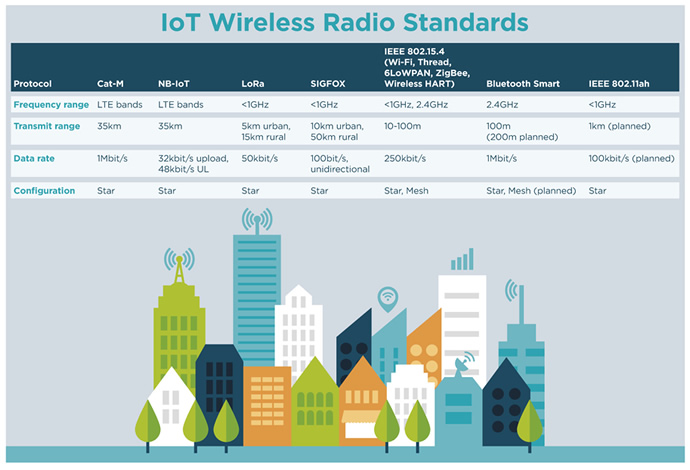
|
So what is IoT?

It’s a phrase you’ll have certainly read or heard – either online, in the press or on TV. IoT – or Internet of Things – is now everywhere and it can sometimes be puzzling. IoT, IIoT – of the Industrial Internet of Things – Industry 4.0, and Smart Factories are in essence all the same thing.
But what is IoT? Are all these things different? And what does any of it matter to you?
IoT, put simply, is anything that’s connected to a network (including the internet) which can communicate autonomously without needing human intervention. Other terms just describe things that are made possible by IoT. So Connected Home, Car, etc., just means that they are connected to a network in some way.
Industrial IOT or Industry 4.0 (a term which originated in Germany) is really just a way of describing how the same concept can be used in manufacturing or other industrial processes and enables machine designers to make equipment and machinery ‘smart’, so it can track, log, display, monitor and adjust itself accordingly.
That’s it? Yes, that’s really it. So don’t be daunted by all the new terminology, The Internet of Things is actually that simple.
Well, it is for consumers at least. Of course, someone technical is required to make these ‘Things’ that will streamline and simplify our lives. Which is where electronic design engineers come in. They have the technical expertise that can turn our blue-sky dreams into reality! Not like winning the lottery or anything, obviously, but they can design and build lots of things which will help make your life easier and more comfortable.
Perhaps you would like your connected home to make sure the kitchen floor was warm and toasty with your favourite coffee brewed ready for your arrival downstairs in the morning? Or even better, keep track of the car keys, the kids’ shoes or your glasses to save you dashing around looking for them each time you need to leave the house! Maybe you would just like your front door or garage to unlock and open when you get home without trying to juggle the keys with the shopping?
So what has changed and how is this possible now? There are lots of examples of connected devices already in gaming, entertainment, fitness and health, so technologies have been developing rapidly. Now advanced sensors that can detect and send data are available at lower cost; add this to a host of wireless technologies to share the data and the stage is set for a new, connected world where we can pretty much make anything smart – the possibilities are fantastically limitless.
Internet of Things Architecture

IoT Architecture
There are three core elements typically referenced in the IoT architecture.
- Things – Devices that have a means of connecting (wired or wirelessly) to a wider network.
- Network – Similar to your router at home, the network or gateway connects multiple things to the cloud.
- Cloud – Remote servers in a data centre consolidating and storing your data safely and securely.
Data
Things generate data – small bytes of simple data representing sensed information such as, temperature, humidity or position. This is often described as ‘little data’ as it is small in size.
Once multiple devices pass this little data up through the network to the cloud it is consolidated and tracked over time often becoming ever larger. This is sometimes described as ‘big data’ and this is where the IoT becomes really clever. Big data allows you to interrogate thousands or millions of data points in order to learn, understand or control something more effectively.
Using analytics from sensors allows you to connect events to results or actions. For example, knowing that it is getting darker later in spring using ambient light sensors on street lights means they can be turned on later to save electricity. Or sensors detecting that a machine is vibrating more than normal may be a sign it isabout to fail, allowing you to order parts and schedule predictive maintenance.
IoT Protocols
There are lots of languages or protocols emerging suited to the IoT, from traditional Wi-Fi or Bluetooth to newly defined LoraWAN™ and Sigfox.
Each is suited to different uses dependant on several key factors:
- Data Rate – How much information is being sent?
- Power Consumption – For example wearables only have a small amount of battery life?
- Range – Does it need to be transmitted a few meters or a few kilometres?
- Frequency – What frequencies are available to use in the region?
Designing for the IoT
A lot of the technology required to build the IoT isn’t new, more that each element has reached a maturity and cost effectiveness where it is now easily available.
Modules such as the WepTech 6LoWPAN router are now available to help you build your solution easily, but also the discrete components such as the Silicon Labs EFM32 Pearl Gecko Microcontrollers for use in IoT smart nodes. Even the passives and connectors are changing to meet the new demands innovative IoT projects are driving. USB-C will allow us to have less cables connecting our wearables and multilayer ceramic capacitors just 0.6mm x 0.3mm will allow them to be smaller than ever.
IoT Wireless Radio Standards

Your Favourite IoT Posts



















